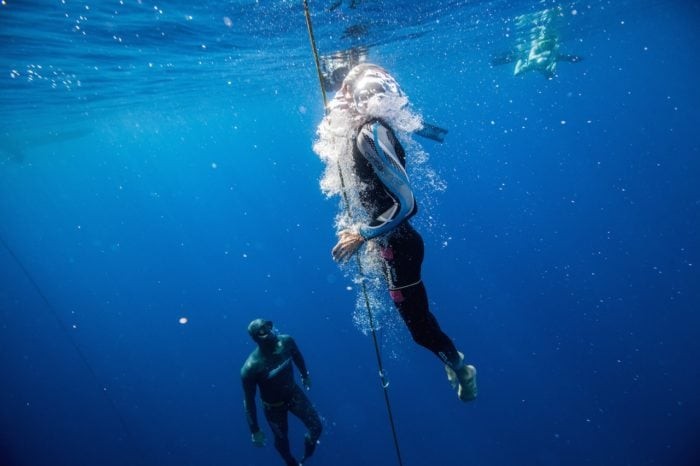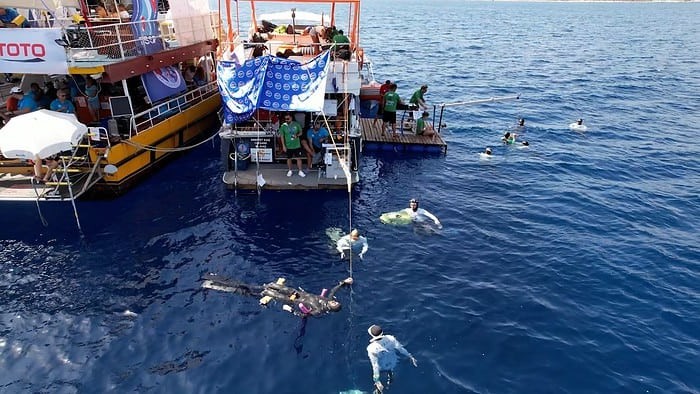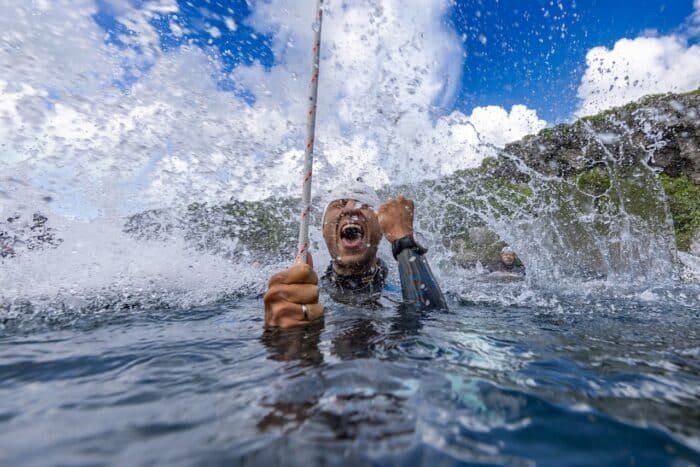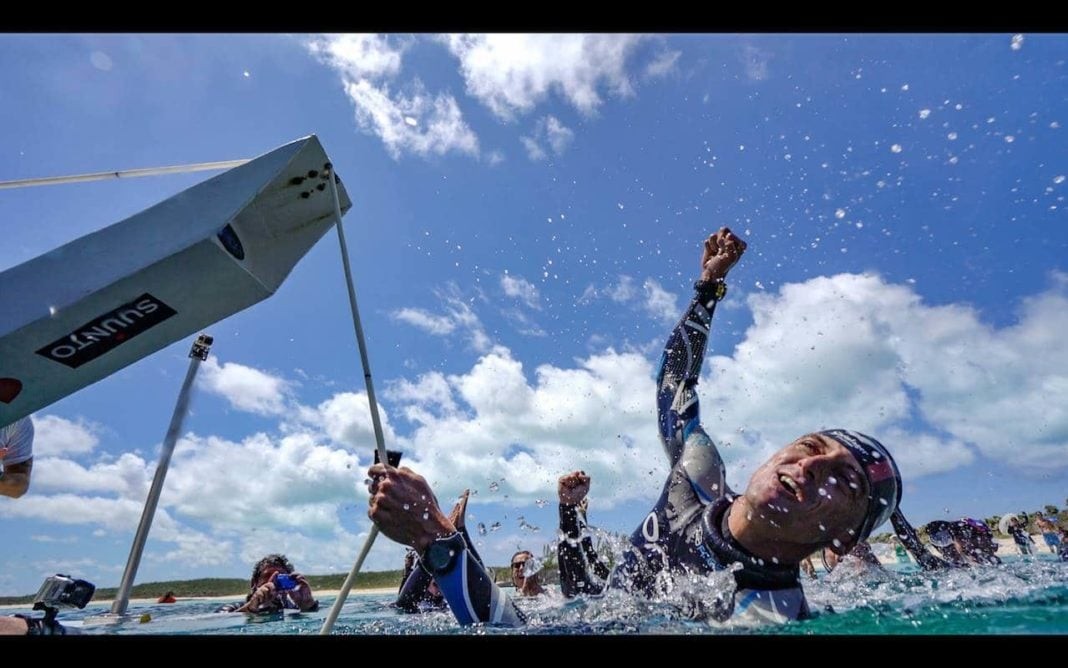In a recent blog post, William Trubridge – world champion freediver, public speaker, and ocean ambassador – says freediving world championships have lost their charm, and he has a point. In this article, we give some more background on early and present-day freediving world championships and go over some key points he mentions in his blog post.
Early Freediving World Championships
CMAS (Confédération Mondiale des Activités Subaquatiques) is the oldest organized underwater watersports federation and has been holding freediving competitions and ratifying records since the late 1970s. However, after a few serious accidents, CMAS stopped holding depth competitions, resuming only in 1995. This made room for AIDA (Association Internationale pour le Développement de l’Apnée), a freediving federation, competition organizer, and education system, to form in 1992 and set their own rules and guidelines for freediving competitions and record attempts.
While AIDA began holding Team World Championship competitions in 1996, it wasn’t until 2005 that Individual World Championships for depth began taking place. These competitions only occurred every two years and were widely looked forward to by athletes and fans alike. To hold the World Champion title and all the glory that comes with it, male and female athletes had just a single attempt at a dive in each of the three disciplines at the World Championship: CWT (Constant Weight – diving to depth with a monofin or bifins), FIM (Free Immersion – pulling down to depth and back up using a line), and CNF(Constant Weight No Fins – swimming down to depth and back up without fins).

These six freedivers (three men and three women) would be revered as World Champions for two full years before the next opportunity to steal the title came along. Top freedivers would plan their training and attendance at other competitions around the World Championship, and anticipation for these events was unprecedented. They were the only ones of their kind – that is, until 2015.
In 2015, CMAS began holding World Freediving Outdoor Championships – depth world championship competitions with four disciplines: CWT, CNF, CWTB (Constant Weight with Bifins – diving to depth using only bifins), and Jump Blue (a CMAS-specific freediving discipline that involves swimming at a depth of 10m / 32 ft for maximum distance). However, they held their championship event yearly. This prompted AIDA to scramble and change their previously biennial championships into a yearly occurrence. And so, according to William, the dilution of the World Champion title began.
Present Day Freediving World Championships
Currently, the title of World Champion is much more within reach of athletes than it was seven years ago. As of recent years, both AIDA and CMAS include four disciplines in their world championship events: CWT, CWTB, FIM, and CNF. This means that instead of six World Champion titles to split between six men and women every two years, there are now eight men and women battling each other twice a year, making a total of 32 potential World Champion titles athletes can earn in that same time period.

These athletes that hold the title of World Champion today may only get a fraction of the attention and glory in times past. Freediving competitions are usually held in summer and fall, which means that if you are a freediving athlete like Kateryna Sadurska from Ukraine, you could win the World Champion title in FIM on August 19th, 2022. Then, less than two months later, another athlete like Fatima Korok could also win a FIM World Champion title. Furthermore, with two World Championships per year, some athletes may only be able to attend one event, somewhat reducing the excitement of rivalries between competitors in a single competition.
Cost
Another problem athletes face is that attending freediving competitions is not cheap. Hefty athlete fees, plane ticket prices, and living costs at locations far-flung across the globe make attending two World Championships a year too cost-prohibitive for some. For example, AIDA charged athletes 600EUR apiece for the 27th AIDA World Championship, and the rate for a single room at the official hotel was 72EUR per night (the competition spanned over nine days). It’s also important to remember that oftentimes, freediving athletes are not full-time athletes and have a regular jobs where they have to negotiate time off.
Regarding costs, William also points out that CMAS “sinks huge amounts of funding into its WC because it doesn’t have anywhere else to spend the money that comes to it from national bodies.” He also mentions that AIDA tries to match CMAS with the expenses; however, most of their competition funding comes from student registration fees, which is something of a sore point among AIDA instructors.
World Records
William brought up the fact that no world records have been set at world championship events since 2013, and there is a good explanation for this. First, it should be noted that athletes are only allowed to dive once in a single discipline. This forces them to be especially conservative when announcing their dives, where they must face the choice between a shallower, successful dive or a record-breaking dive that may push their limits too far. So it shouldn’t come as a surprise that athletes usually choose shallower dives to ensure they get a white card for a clean performance rather than a yellow card for penalties or a red card for disqualification.

Besides, there are competitions athletes can attend that give them multiple attempts in any discipline they choose to compete in. For example, Vertical Blue is a yearly competition held in Dean’s Blue Hole in the Bahamas and is organized by William Trubridge. The competition site each year features fabulous diving conditions with virtually zero current and waves. But most importantly, athletes get multiple attempts to dive in any discipline they want. This freedom and the pristine pool-like conditions make Vertical Blue a magnet for world record attempts. It also makes Vertical Blue arguably more exciting to watch than the generally more conservative dives at World Championships.
Additionally, earlier this year, the final day of Vertical Blue 2022 was August 11th while the first day of the 29th AIDA World Championship was August 17th. Unfortunately, this did not leave much room for athletes to travel, settle down, recover, and train for the open sea conditions of the World Championship. Sadly, some athletes had to choose between the two events and could only attend one, and famous rivalries that hardcore freediving fans obsessed over could not take place on the same livestream.
Final thoughts
According to William, “livestream viewer numbers for world championship events are less and less every year, despite Diveye technology improving.” It seems that CMAS and AIDA are set on operating separately and attempting to outdo one another every year. So, while athletes are left scrambling to raise enough funds and free up enough time for two World Championships, it may be that freediving fans’ interest will continue to dwindle slowly. Maybe the media will have only world records to report on instead of legendary rivalries that call to mind the likes of Jacques Mayol and Enzo Maiorca.
Or maybe now you, as a freediver, will have a better chance of becoming the next World Champion…before sharing the glory with another new World Champion a few months later.

